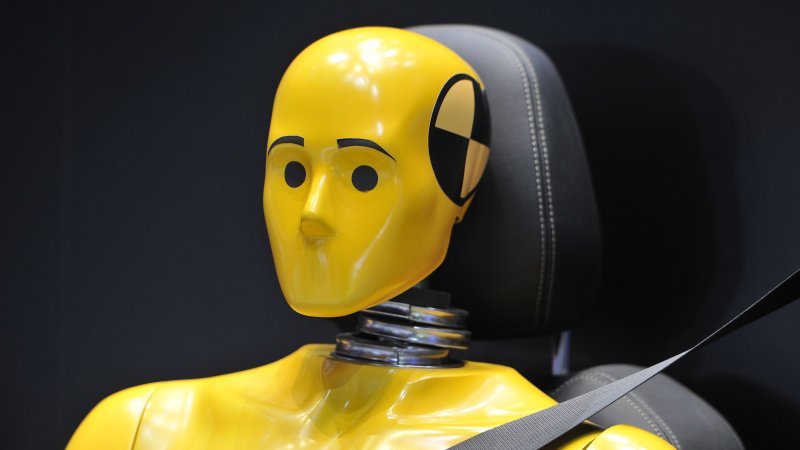NHTSA could finally start using rear-seat crash-test dummies

According to Bloomberg, NHTSA began using its five-star ratings in 1978, but it's only ever measured the safety of the front two seats. The impact of this, according to the engineering director for the Center for Injury Research and Prevention at Children's Hospital of Philadelphia, Kristy Arbogast, is that back-seat safety hasn't kept up with the dramatic advances in front-seat safety. "People assume a five-star rating extends to all seating locations, but it doesn't," Arbogast told Bloomberg.
Some of the changes to improve back-seat safety are relatively simple. Adding seat-belt pre-tensioners that automatically tighten belts in the event of a crash is an easy example. Other changes are more difficult to make, like adding frontal airbags for back-seat passengers.
There's also the problem of super-strong front seats standing as immovable barriers to rear passengers. Designed to protect front-seat passengers in rear-end collisions, some front seats are designed to collapse – absorbing and dissipating energy in the process – posing a danger to back-seat passengers. Bloomberg cites the case of a 16-month old girl, Taylor Warner, killed in a 2010 rear-end collision, where a front-seat collapsed and hit her in the head. According to Bloomberg, NHTSA wants to find a compromise between protecting front-seat passengers with strong seats which still protect back-seat passengers in the event of a collapsing seat.
Clarence Ditlow, the Center for Automotive Safety's executive director, told Bloomberg that part of the problem is that federal crash databases don't classify deaths and injuries for rear-seat occupants related to front-seat collapses. But earlier this year, Autoblog reported on a CAS analysis that showed nearly 900 children were killed sitting in the back seats in rear-end collisions between 1990 and 2014.
That's a staggering stat, but according to NTSB Board Member Bella Dinh-Zarr, the push for rear-seat dummies is being driven by an increase in Uber and Lyft users. The popularity of the two services seems like a weak justification for testing that seems like it'd have been useful decades ago. We have a flurry of questions into NHTSA about the new testing procedure, and and are awaiting answers.
